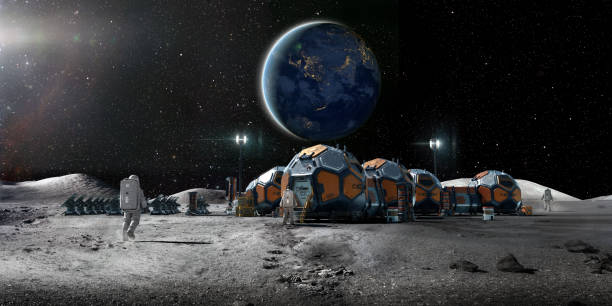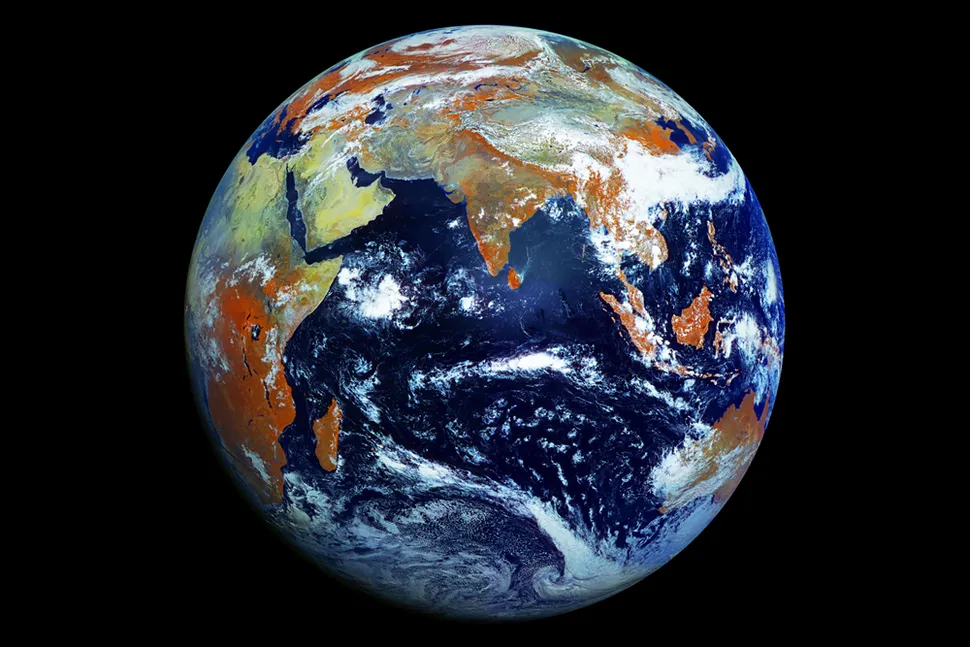For as long as humanity has gazed at the night sky, the Moon has stirred both wonder and longing. It has been the companion of our myths, the clock of our tides, the light in our darkness. Ancient civilizations worshipped it as a deity, poets sang of it as a symbol of mystery, and scientists studied it as a key to understanding our universe. Yet beyond awe and inspiration, the Moon has always represented something more: a destination. To set foot on that silvery sphere was once unimaginable, but in 1969, humanity achieved the unthinkable. Neil Armstrong’s words echoed across the world, announcing that a new era had begun. But more than half a century later, humans still do not live there. The dream of colonizing the Moon remains suspended between imagination and reality. The question is no longer whether it is possible, but when it will truly happen.
The First Steps Toward a Lunar Future
The Apollo missions of the late 1960s and early 1970s proved that humans could travel to the Moon, walk upon its surface, and return safely. These voyages were not mere stunts of national pride; they were feats of extraordinary scientific and technological advancement. The Apollo astronauts brought back samples of lunar soil and rock, deployed instruments, and revealed to humanity that the Moon was not a distant myth but a tangible, reachable world.
Yet colonization was never the mission. Apollo was about beating the Soviet Union in a race of prestige. Once victory was claimed, political will evaporated. The cost was staggering, and the risks immense. For decades, the Moon faded from center stage, replaced by robotic probes, space stations, and explorations of Mars and the outer planets. But the dream of a permanent human presence on the Moon never died. It lived on in science fiction, in the imagination of children, and in the plans of visionary scientists who saw the Moon not as a barren wasteland but as humanity’s first true outpost in space.
Why the Moon Matters
The Moon is not just a poetic companion or a relic of human exploration. It is a stepping stone to the future. Living on the Moon is not an end in itself but a gateway to becoming a multi-planetary species. Its importance lies in several profound reasons.
First, the Moon is close. At just 384,000 kilometers away, it is only a three-day journey from Earth. This makes it far more accessible than Mars or other destinations. Supplies, emergency returns, and communication are all feasible in ways that interplanetary voyages are not.
Second, the Moon offers scientific treasure. Its surface preserves the history of the solar system, unaltered by atmosphere or tectonics. Studying lunar geology can teach us about Earth’s own origins, about asteroid impacts, and about the early history of planets.
Third, the Moon may hold resources critical to sustaining life and fueling exploration. Water ice, discovered in permanently shadowed craters near the poles, can be used for drinking, oxygen production, and fuel through electrolysis. Lunar soil, or regolith, could be transformed into building material. The Moon could become a gas station for spacecraft heading deeper into space.
Finally, colonizing the Moon would serve as a rehearsal for Mars and beyond. Every challenge faced on the Moon—from radiation protection to habitat construction—will prepare humanity for more distant worlds. The Moon is humanity’s training ground for the stars.
The Harsh Reality of a Lunar Life
But dreaming of colonization is easier than living it. The Moon is a hostile world, stripped of the comforts and protections that Earth provides so effortlessly. To survive, humans must overcome challenges that test the limits of engineering, biology, and imagination.
The first obstacle is radiation. Without an atmosphere or magnetic field, the Moon is bombarded by cosmic rays and solar particles. Prolonged exposure can cause severe health problems, including cancer. Any lunar habitat must shield its inhabitants with thick layers of material, whether regolith piled over domes, underground tunnels, or advanced shielding technologies.
The second obstacle is temperature. The lunar day lasts about 29 Earth days, meaning two weeks of blazing sunlight followed by two weeks of freezing darkness. During the day, temperatures soar above 120°C; during the night, they plunge below -170°C. Habitats must be designed to withstand this brutal cycle, storing energy and maintaining stable internal environments.
Then there is the regolith itself. Lunar dust is not soft powder but razor-sharp, abrasive grains that cling to everything. Apollo astronauts found it irritating to skin and lungs, damaging to equipment, and almost impossible to clean. Any long-term settlement must address this hazard with airlocks, filtration systems, and protective gear.
Water, too, is scarce. While polar ice offers hope, it remains locked in shadowed craters that are among the coldest places in the solar system. Extracting and transporting it will require innovative technologies.
And beyond physical challenges lie psychological ones. Life on the Moon would mean isolation, confinement, and distance from Earth. Astronauts would face not just technical survival but the emotional strain of living in an alien world. The human spirit, though resilient, must be prepared for loneliness on a scale never before experienced.
Visions of Lunar Habitats
Scientists and engineers have proposed a dazzling array of ideas for how humans might live on the Moon. Some envision inflatable domes covered with regolith for radiation protection. Others propose underground bases carved into lava tubes—vast natural tunnels formed by ancient volcanic activity. These tunnels could provide ready-made shelter from radiation and temperature extremes.
3D printing using lunar regolith is another promising concept. Robots could construct habitats layer by layer before humans even arrive, creating structures that are strong, protective, and resource-efficient. Solar farms could generate power, while greenhouses would provide food and oxygen, recycling waste in closed-loop life-support systems.
Each design is an answer to the same question: how do we transform a hostile desert into a livable home? The Moon offers no hospitality, so every detail must be engineered. Yet the progress of technology—from robotics to artificial intelligence to materials science—makes these visions more realistic than ever.
The Return of Lunar Ambition
In recent years, the Moon has returned to the forefront of global space programs. NASA’s Artemis program promises to land the next astronauts on the Moon, including the first woman and the first person of color. Artemis is not merely a repeat of Apollo; it aims to build the foundations of sustained presence. With the Lunar Gateway orbiting station and surface missions to the south pole, Artemis represents the first coordinated step toward colonization.
Other nations are joining this new race. China has launched successful robotic missions, including the Chang’e series, and has ambitious plans for future lunar bases. Russia, India, Japan, and Europe are all investing in lunar exploration. The Moon is no longer the prize of one nation but the shared target of many.
Private companies, too, are reshaping the vision. SpaceX, Blue Origin, and others aim to provide transportation, infrastructure, and even habitats. Their reusable rockets and innovative designs promise to reduce costs and increase access. The era of state-driven exploration is merging with the era of commercial space.
For the first time since Apollo, humanity stands on the threshold not of a single visit but of permanent return. The question is not whether, but when.
When Will Humans Truly Live There?
The timeline of lunar colonization is both inspiring and uncertain. NASA aims to establish a sustained lunar presence in the 2030s. China envisions a research base by the same period. Optimists see permanent habitats emerging within two decades; realists caution that unforeseen challenges may delay progress.
The truth lies between ambition and caution. Technologically, we are nearing readiness. Politically and economically, however, the future is fragile. Space colonization demands not just rockets and robots but long-term commitment, international cooperation, and billions of dollars in sustained investment.
What is clear is that the Moon will not remain untouched. Within this century, humanity will almost certainly live there in some form—whether as rotating crews in scientific bases, pioneering settlers in permanent habitats, or explorers paving the way to Mars. The dream of colonization is not fantasy anymore; it is on the horizon of history.
The Human Spirit Among the Stars
To ask when humans will live on the Moon is to ask something deeper: why do we strive for it at all? The Moon offers no easy riches, no lush forests, no paradise. Yet it calls us because it is there, because it represents the next step in our story. To live on the Moon is to prove that humanity is not confined to one fragile planet. It is to show that our curiosity, our courage, and our resilience can carry us beyond the cradle of Earth.
The first Moon settlers will not live in comfort. They will face hardship, isolation, and risk. But they will also be pioneers, heirs to the spirit of exploration that carried humanity across oceans and continents. Their footprints will mark not just the dust of another world but the turning of a page in human history.
When humans finally live on the Moon, it will not simply be a triumph of technology. It will be a triumph of imagination—the belief that we belong not only to Earth but to the universe itself. The Moon will be our first colony, but it will not be our last. From its barren surface, we will look outward to Mars, to the asteroids, to the stars.
And one night, generations from now, children will gaze at the Moon and no longer see a distant mystery. They will see a world where families live, where lights glow in lunar valleys, where humanity has planted not just flags but roots. The Moon will no longer be the realm of dreams. It will be home.






